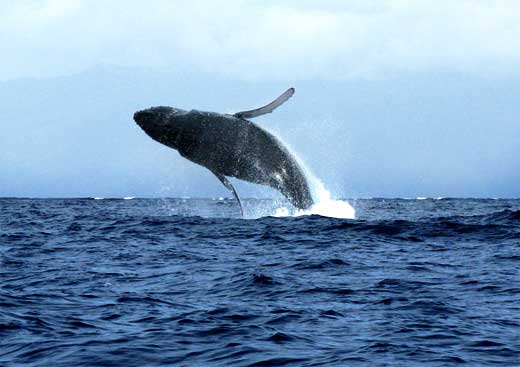Actually, it was only a two hour tour. And we only spent a quarter of that time actually collecting data for our whale lab. But I digress...
Quite a while ago, we wrote up the introductions for a lab involving the famous Hawaiian humpback whales. We got to make our own essential questions predictions, and I thought that there would be more competing male pods later on in the season. I reasoned that as time passed, more pregnant female whales would give birth and be ready to mate again, and thus competition between males for a mate would be more intense. In the last post, we counted the number of competing male pods early in the season (approximately zero). I was optimistic about proving my hypothesis correct; I technically only had to see a single competing male pod on our next outing for it to work. Unfortunately, it wasn't to be. One fine day, we set sail on the sparkling blue ocean, after listening to a fascinating presentation by an expert on marine life. We all had our pens and clipboards out, eager to start counting. My teacher started the stopwatch, explaining that to keep data consistent we would only count for the same amount of time we had spent on the last whale observation outing. "You have half an hour," he said. "Go!" 

 Here is a slightly more interesting graph that details the number of whales seen altogether. Apparently, whales are more common later in the season, which could account for all the competing male pods we saw on the second outing (even though they were outside of the observation time limit).
Here is a slightly more interesting graph that details the number of whales seen altogether. Apparently, whales are more common later in the season, which could account for all the competing male pods we saw on the second outing (even though they were outside of the observation time limit). 
Hopefully next time I'll have more luck. But for now, I'll be satisfied with the fact that my hypothesis is probably actually correct anyway, even if this specific data range doesn't authenticate my claim. Besides, the outing was super fun either way. What time we didn't spend watching for whales, we spent beating each other with giant toy stuffed whales. Good times . . . good times.
~ Adam
No comments:
Post a Comment